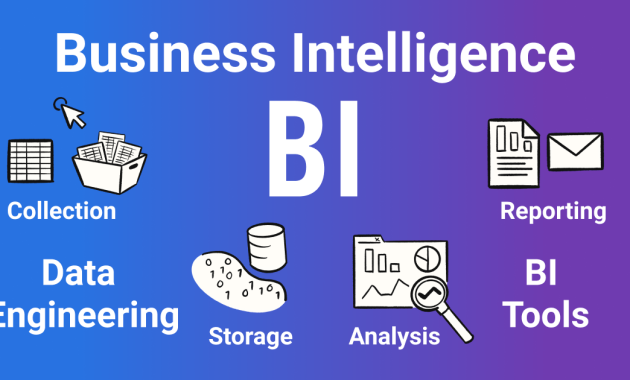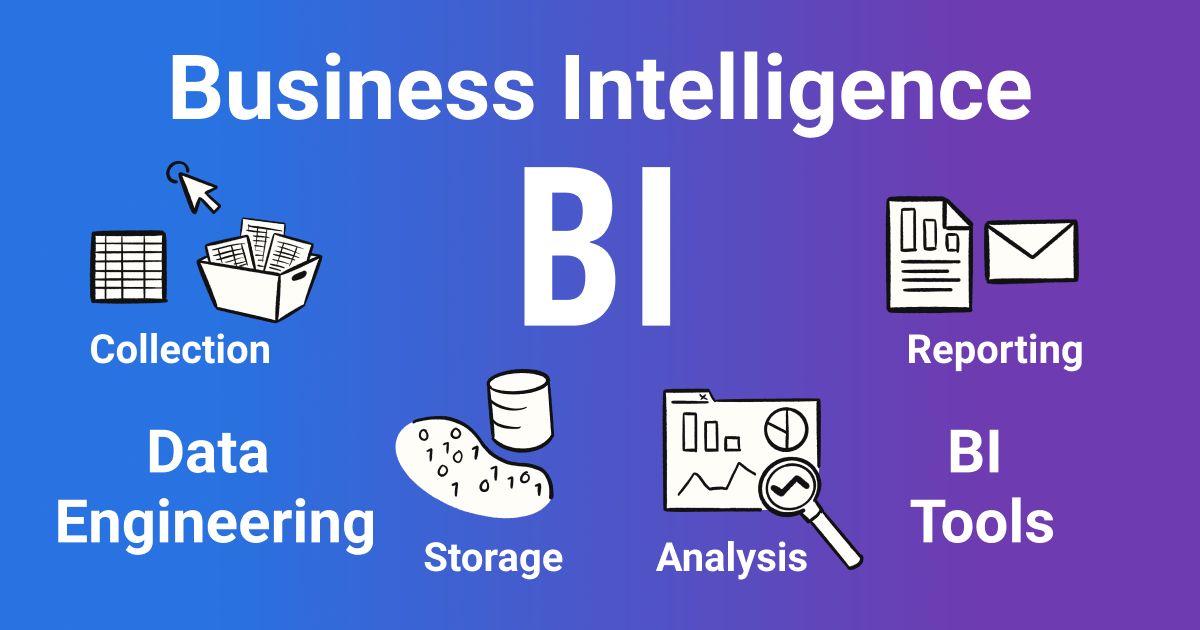
The New Era of 15 Business Intelligence Tools For Smarter Insights
The business landscape is changing rapidly. Data is the new gold, and businesses are scrambling to unearth it. The key to unlocking this value lies in Business Intelligence (BI) tools. These tools transform raw data into actionable insights. This article explores the new era of 15 business intelligence tools for smarter insights. We’ll examine how these tools are reshaping decision-making across industries. We will also delve into their core functionalities and benefits.
Understanding the Power of Business Intelligence
Business intelligence tools are more than just data analysis platforms. They are strategic assets. They empower organizations to make data-driven decisions. They provide a comprehensive view of business performance. This includes sales, marketing, operations, and finance. BI tools collect, process, and analyze data from various sources. These sources can be internal databases, external data feeds, and cloud applications. The ultimate goal is to identify trends, patterns, and anomalies. These insights guide strategic planning and operational improvements.
The Evolution of Business Intelligence Tools
The evolution of BI tools has been remarkable. Early tools focused on static reporting and basic analysis. Today’s tools offer advanced capabilities. These include predictive analytics, machine learning, and self-service BI. Cloud-based solutions have democratized access to BI. They make it easier for businesses of all sizes to leverage data. The shift towards user-friendly interfaces and interactive dashboards is also notable. This allows non-technical users to explore data effectively. The new era of 15 business intelligence tools reflects this evolution. These tools offer a blend of sophistication and accessibility.
Top Business Intelligence Tools for 2024 and Beyond
Here are 15 of the leading business intelligence tools. These tools are shaping the future of data-driven decision-making:
- Tableau: A widely-used tool known for its intuitive interface. It provides powerful data visualization and interactive dashboards. Tableau is excellent for exploring data and sharing insights.
- Microsoft Power BI: An integrated platform offering a comprehensive suite of BI features. It integrates seamlessly with other Microsoft products. Power BI offers robust data modeling and reporting capabilities.
- Qlik Sense: Known for its associative data modeling engine. Qlik Sense allows users to explore data freely and uncover hidden relationships. It is great for ad-hoc analysis and discovery.
- Looker (Google Cloud): A data analytics platform with a focus on data governance and collaboration. Looker enables users to create and share data-driven insights. It is ideal for organizations with complex data needs.
- Sisense: Provides an end-to-end BI solution. It offers data preparation, analysis, and visualization capabilities. Sisense excels at handling large and complex datasets.
- ThoughtSpot: A search-driven analytics platform. ThoughtSpot allows users to ask questions in plain language and get instant insights. It is designed for ease of use and rapid data exploration.
- Domo: A cloud-based BI platform that connects to various data sources. Domo offers real-time dashboards and collaboration features. It is suitable for businesses of all sizes.
- Yellowfin: A BI platform that emphasizes data storytelling and collaboration. Yellowfin offers automated insights and embedded analytics. It is designed to enhance user engagement.
- MicroStrategy: A comprehensive BI platform with advanced analytics capabilities. MicroStrategy supports data discovery, reporting, and mobile BI. It is suitable for large enterprises.
- SAP Analytics Cloud: A cloud-based BI solution integrated with SAP applications. SAP Analytics Cloud offers planning, predictive analytics, and business intelligence. It is ideal for SAP customers.
- SAS Visual Analytics: A platform with powerful analytics and data visualization capabilities. SAS Visual Analytics supports advanced statistical analysis and machine learning. It is suitable for complex data projects.
- Board: A decision-making platform that combines BI, planning, and simulation. Board enables users to build integrated planning and performance management applications. It is suitable for strategic planning.
- Zoho Analytics: A self-service BI and data analytics platform. Zoho Analytics offers data integration, visualization, and collaboration features. It is suitable for small to medium-sized businesses.
- Oracle Analytics Cloud: A comprehensive cloud-based analytics platform. Oracle Analytics Cloud offers data preparation, visualization, and advanced analytics capabilities. It is suitable for enterprises.
- Birst: A cloud BI platform focused on agile data discovery and reporting. Birst offers a network of pre-built data connectors and dashboards. It is designed for faster deployment.
Key Features and Capabilities of Modern BI Tools
Modern business intelligence tools offer a wide range of features. These features enable comprehensive data analysis. Key capabilities include:
- Data Visualization: Creating charts, graphs, and dashboards to present data visually.
- Data Integration: Connecting to various data sources and combining data.
- Data Modeling: Structuring and organizing data for analysis.
- Reporting: Generating reports and summaries of data.
- Self-Service BI: Empowering users to explore data independently.
- Predictive Analytics: Using data to predict future trends.
- Machine Learning: Applying algorithms to automate analysis.
- Real-time Analytics: Analyzing data as it is generated.
- Mobile BI: Accessing data and dashboards on mobile devices.
- Collaboration: Sharing insights and collaborating on data analysis.
Choosing the Right Business Intelligence Tool
Selecting the right BI tool is crucial. The choice depends on various factors. Consider the following when making your decision:
- Business Needs: Identify the specific data analysis needs of your organization.
- Data Sources: Determine the data sources you need to connect to.
- Budget: Establish a budget for the BI tool and related costs.
- Technical Skills: Assess the technical skills of your team.
- Scalability: Consider the scalability of the BI tool.
- User Interface: Choose a tool with an intuitive user interface.
- Features: Evaluate the features and capabilities of each tool.
- Support: Consider the level of support offered by the vendor.
Benefits of Implementing Business Intelligence Tools
Implementing business intelligence tools offers numerous benefits. These benefits can transform your business. Key advantages include:
- Improved Decision-Making: Data-driven insights lead to better decisions.
- Increased Efficiency: Automating analysis saves time and resources.
- Enhanced Productivity: Streamlining data access boosts productivity.
- Greater Revenue: Identifying opportunities increases revenue.
- Reduced Costs: Optimizing operations reduces costs.
- Competitive Advantage: Gaining insights helps you stay ahead.
- Better Customer Experience: Understanding customers enhances experiences.
- Data-Driven Culture: Fostering a data-driven culture improves business.
The Future of Business Intelligence
The future of business intelligence is exciting. Several trends will shape the industry. These trends include:
- Artificial Intelligence (AI): AI will automate analysis and generate insights.
- Machine Learning (ML): ML will enhance predictive analytics.
- Big Data: BI tools will handle ever-increasing data volumes.
- Cloud Computing: Cloud-based BI will become more prevalent.
- Data Democratization: More people will have access to data and insights.
- Embedded Analytics: BI will be integrated into more applications.
- Augmented Analytics: Tools will provide automated insights and recommendations.
The new era of 15 business intelligence tools is here. Businesses must embrace these tools to stay competitive. Understanding these tools is essential for success. Businesses can gain a significant advantage by adopting these tools. The insights provided by these tools will drive strategic decision-making. The future of business intelligence is bright. Embrace the power of data and these tools. This will help you achieve smarter insights. The tools offer various features. They empower you to make informed decisions. The right business intelligence tools can transform your business. They can help you gain a competitive edge. The evolution of these tools continues. The new era of 15 business intelligence tools offers many advantages. They will help you thrive in the data-driven world. The tools provide actionable insights. They drive better business outcomes. The ongoing innovations in these tools are transforming industries. They are changing the way businesses operate. The new era of 15 business intelligence tools is changing the game. They are empowering businesses to succeed.
Conclusion
The new era of 15 business intelligence tools is transforming businesses. These tools enable smarter insights and data-driven decisions. Choosing the right tool is crucial. It depends on business needs and technical skills. The benefits of implementing BI tools are significant. They include improved decision-making and increased efficiency. The future of BI is promising. AI, ML, and cloud computing will play key roles. Embrace the power of data and these tools. This will drive success in the data-driven world. The new era of 15 business intelligence tools provides a competitive edge. Use these tools to transform your business. They will help you achieve smarter insights and better outcomes. The journey of business intelligence is ongoing. The new era of 15 business intelligence tools is just the beginning. [See also: Related Article Titles]

